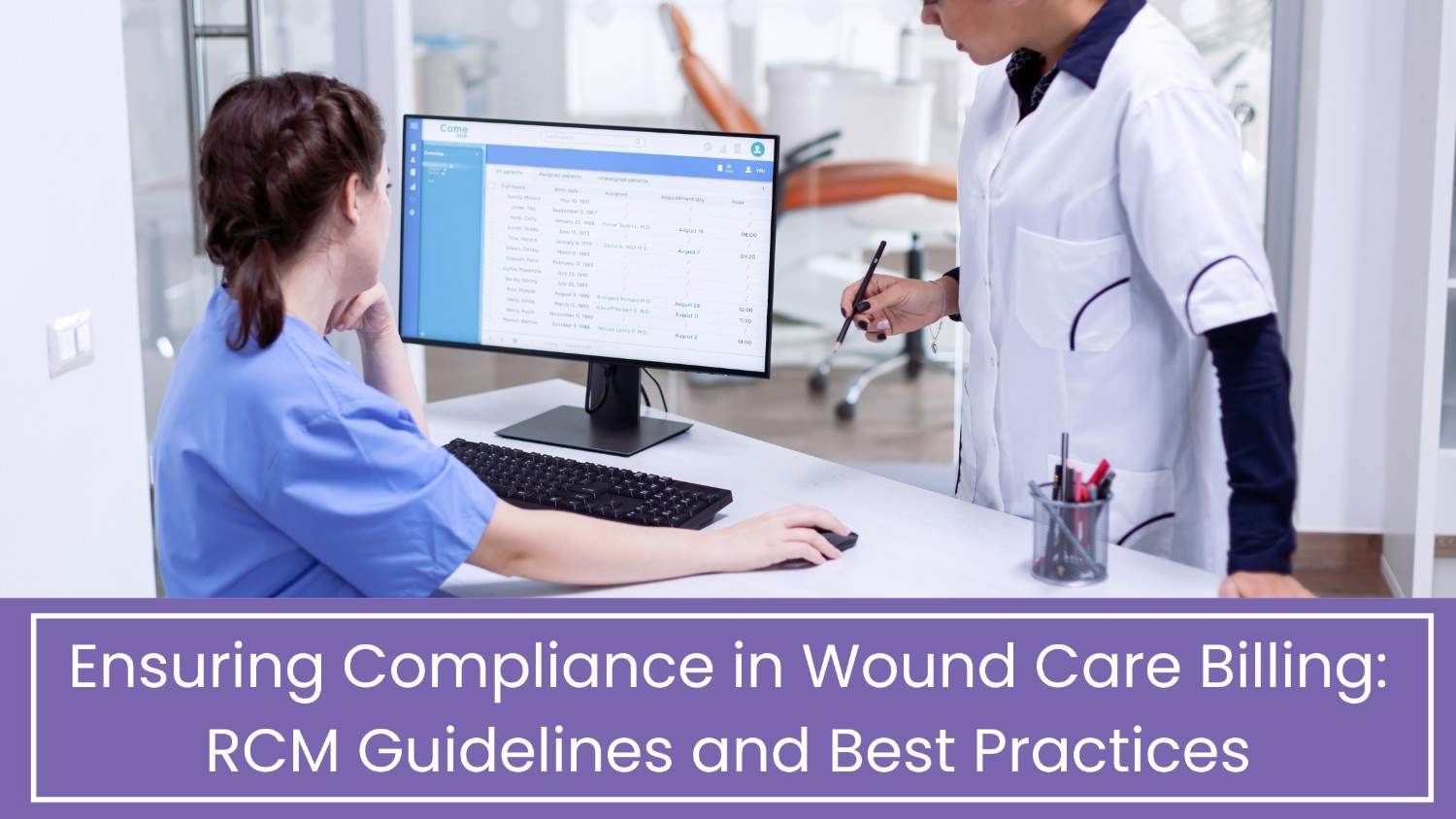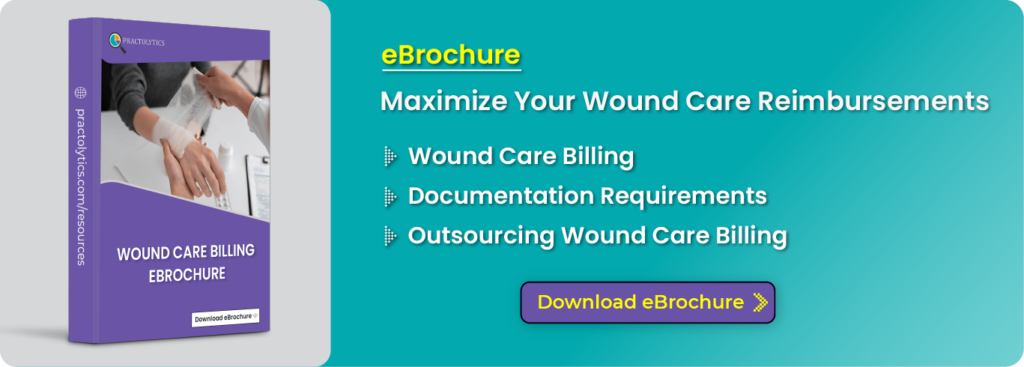Ensuring Compliance in Wound Care Billing RCM Guidelines and Best Practices
In the realm of wound care billing, compliance with regulatory guidelines is paramount to avoid penalties, denials, and revenue loss. Revenue Cycle Management (RCM) in wound care requires adherence to specific billing and coding standards to ensure accurate reimbursement and maintain ethical practices. This blog will delve into the guidelines and best practices for ensuring compliance in wound care billing, empowering providers to navigate the complexities of the revenue cycle with confidence.
Table of Contents
Stay Current with Wound Care Coding Guidelines
Staying abreast of the latest wound care coding guidelines from organizations such as the American Medical Association (AMA) and the Centers for Medicare and Medicaid Services (CMS) is essential for accurate billing in wound care. Understanding the nuances of wound care coding, including evaluation and management (E&M) services, debridement, wound closure techniques, and supplies, enables providers to assign the appropriate codes for services rendered.
Document Wound Care Services Thoroughly
Comprehensive documentation is the cornerstone of compliant billing in wound care. Clinicians must meticulously document wound assessments, including the type, size, and location of wounds, as well as the extent of tissue involvement and any associated complications. Additionally, detailed descriptions of treatments provided, including debridement, dressings, and adjunctive therapies, should be recorded to support billing for services rendered.
Code to the Highest Level of Specificity
Coding to the highest level of specificity ensures accurate reimbursement and minimizes the risk of wound care claim denials. Providers should use the most granular diagnosis and procedure codes available to reflect the complexity and severity of the patient’s condition accurately. This includes documenting any comorbidities or complications that may impact the course of treatment and justify the necessity of wound care services.
Implement Compliance Audits Regularly
Conducting regular compliance audits of documentation, coding practices, and claims submission processes is essential for identifying potential compliance risks and areas for improvement. Internal audits can help ensure that billing practices align with regulatory requirements and organizational policies, mitigating the risk of non-compliance and associated penalties.
Educate Staff on Compliance Best Practices
Comprehensive staff training on compliance best practices is critical for fostering a culture of compliance within the organization. Staff members involved in coding, billing, and documentation should receive ongoing education on coding guidelines, documentation requirements, and regulatory updates relevant to wound care billing. This empowers staff to accurately capture and report services, reducing the likelihood of billing errors and compliance violations.
Stay Informed About Regulatory Changes
The healthcare landscape is constantly evolving, with regulatory changes impacting billing and reimbursement in wound care. Providers must stay informed about updates to coding guidelines, reimbursement policies, and regulatory requirements issued by CMS, commercial payers, and accrediting bodies. Subscribing to industry newsletters, attending educational seminars, and participating in professional associations can help providers stay ahead of regulatory changes and adapt their billing practices accordingly.
Leverage Technology for Compliance
Utilizing technology solutions, such as electronic health record (EHR) systems and billing software with built-in compliance checks, can streamline compliance efforts and reduce the risk of errors. Automated coding assistance tools and built-in compliance alerts help ensure that documentation and coding practices adhere to regulatory guidelines, minimizing compliance risks and enhancing billing accuracy.
Conclusion: Navigating Compliance in Wound Care Billing with Practolytics
In conclusion, ensuring compliance in wound care billing is essential for providers to avoid regulatory pitfalls and optimize reimbursement. Practolytics emerges as a trusted partner in this journey, offering a comprehensive suite of tools and solutions designed to streamline compliance efforts and enhance revenue cycle management.
By integrating Practolytics into your organization’s operations, you gain access to advanced technology solutions that facilitate accurate documentation, coding to the highest level of specificity, and automated compliance checks. Practolytics empowers your team to stay current with coding guidelines, conduct regular compliance audits, and provide ongoing staff education to foster a culture of compliance within the organization.
Moreover, Practolytics’ robust analytics and reporting capabilities enable proactive identification of compliance risks and opportunities for improvement, allowing providers to navigate the complexities of the revenue cycle with confidence. With Practolytics, you can leverage technology to stay informed about regulatory changes, adapt billing practices accordingly, and mitigate compliance risks effectively.
In partnership with Practolytics, providers can navigate the evolving healthcare landscape with ease, ensuring that every step of the revenue cycle—from documentation to reimbursement—is optimized for compliance and financial success. Together, we can achieve the shared goal of delivering high-quality wound care while maintaining ethical billing practices and maximizing revenue opportunities. With Practolytics as your trusted ally, compliance in wound care billing becomes not just a requirement, but a strategic advantage in driving sustainable growth and excellence in patient care.
RECOMMENDED TO READ – Optimizing Reimbursements in Wound Care: Strategies for RCM Efficiency
Talk to Medical Billing Expert Today — Get a Free Demo Now!






